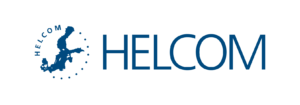Basic Facts
Anthropogenic inputs from point sources (with municipalities as the main (90%) source) is the second largest contributor of waterborne nutrient inputs to the Baltic Sea, with 12% of nitrogen and about 20% of phosphorus (PLC-5 report).
Improving municipal waste water treatment remains a remarkably cost-efficient measure to reduce phosphorus loads, a major cause of pollution in the Baltic Sea. The Contracting Parties have made major efforts in this field, and many cities in the region have improved their treatment standards in recent years. Yet, not all wastewater treatment plants meet HELCOM’s recommended standards to save the sensitive marine environment of the Baltic Sea. In November 2012, Estonia made news by informing on the adoption of new requirements for municipal wastewater treatment plants. The regulation will meet the Baltic Sea Action Plan’s treatment standard on advanced sewage treatment, in line with HELCOM Recommendations 28E/5 and 28E/6.
Preparations have started in HELCOM to complement the aforementioned Recommendation 28E/5 on municipal wastewater treatment, with a separate one addressing sustainable sewage sludge handling.


